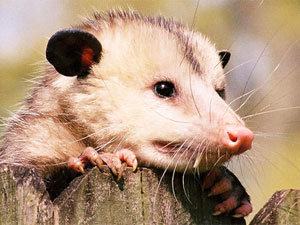Opossums (often called possums) are North America’s only native marsupial and generally beneficial wildlife that eat insects, rodents, and ticks. However, when they take up residence on your property, they can become problematic. These nocturnal creatures may overturn garbage cans, nest in attics or under decks, leave droppings, and potentially carry diseases. The key to successful possum control is using humane, effective repellents that encourage them to relocate without harm.
Quick Picks: Best Possum Repellents
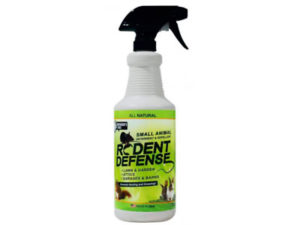
Editor’s Choice
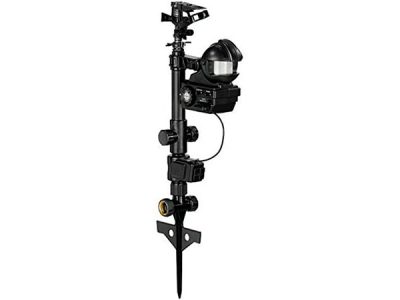
Most Effective
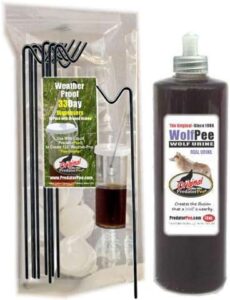
Natural Choice
Understanding Possum Behavior and Problems
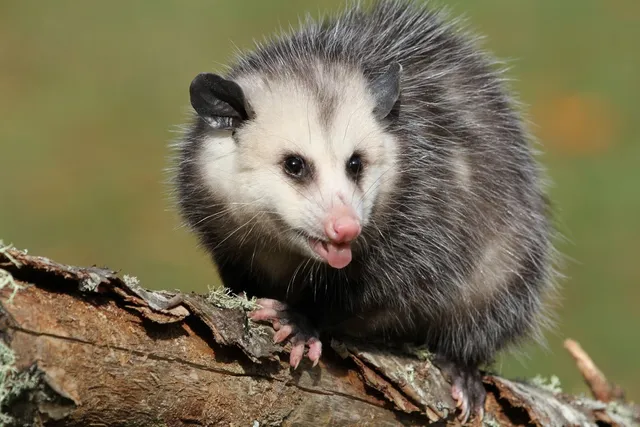
Before choosing a repellent, it’s important to understand why possums might be attracted to your property and what problems they can cause.
What Attracts Possums
- Accessible garbage cans and compost bins
- Pet food left outdoors
- Fallen fruit from trees
- Grubs and insects in lawns
- Shelter opportunities (attics, sheds, decks)
Common Problems
- Overturned garbage cans and scattered waste
- Damage to lawns from digging for grubs
- Nesting in attics, sheds, or under structures
- Droppings and urine odors
- Potential disease transmission risks
Behavioral Patterns
- Nocturnal activity (most active at night)
- Excellent climbers and swimmers
- Prefer dark, sheltered hiding spots
- Follow the same routes repeatedly
- Active year-round in warmer climates
Possums are beneficial wildlife that consume up to 5,000 ticks per season, helping reduce Lyme disease risk. They also eat insects, rodents, and carrion. The goal should be humane deterrence rather than elimination.
How Possum Repellents Work
Effective possum repellents target the animal’s primary senses and natural instincts. Understanding these mechanisms helps you choose the right approach for your situation.
-
Scent-Based Deterrents:
Target the possum’s keen sense of smell with offensive odors or predator scents that signal danger. -
Taste Deterrents:
Make food sources unpalatable using bitter or spicy compounds that irritate mucous membranes. -
Motion-Activated Devices:
Startle possums with sudden lights, sounds, or water sprays when they enter protected areas. -
Ultrasonic Repellents:
Emit high-frequency sounds that are uncomfortable for possums but largely inaudible to humans. -
Visual Deterrents:
Use flashing lights or predator eye patterns to create fear responses in nocturnal animals.
Pro Tips for Maximum Effectiveness
- Allow 2-3 weeks for repellents to take full effect
- Combine multiple repellent types for better results
- Rotate or move devices periodically to prevent habituation
- Reapply liquid repellents after rain or heavy watering
- Address attractants (food sources, shelter) alongside repellent use
Top Commercial Possum Repellents
Exterminators Choice Small Rodent Defense Spray
Editor's ChoiceHow Does It Work
How to Use
- Shake well before each use
- Spray directly around areas of possum activity
- Apply to entry points, trash cans, garden areas, and shelter locations
- Reapply daily for the first week, then as needed
- Safe for use on plants and around homes
- Natural, non-toxic ingredients safe around pets and children
- Ready-to-use formula requires no mixing
- Pleasant scent for humans
- Works on multiple pest species
- Can be used indoors and outdoors
- Requires frequent reapplication
- May need higher concentration for severe infestations
- Weather conditions can reduce effectiveness
Orbit 62100 Yard Enforcer Motion-Activated Sprinkler
Most EffectiveHow Does It Work
How to Use
- Connect to standard garden hose with adequate water pressure
- Position 3-4 feet high for optimal coverage
- Set to night-only mode for possum control
- Adjust sensitivity and spray duration as needed
- Use multiple units for larger areas
- Highly effective deterrent with immediate results
- Smart sensor technology reduces false activations
- Covers up to 1,600 square feet
- Day/night mode options for targeted control
- Weather-resistant construction
- Can double as garden irrigation
- Requires constant water connection
- Higher initial cost than other options
- May startle pets or children
- Not suitable for areas without water access
PredatorPee Original Wolf Urine
Natural ChoiceHow Does It Work
How to Use
- Apply scent tags around the perimeter of protected areas
- Spray liquid formula on surfaces near entry points
- Hang scent tags 2-3 feet from ground level
- Reapply weekly and after heavy rain
- Position tags every 10-15 feet for continuous coverage
- Utilizes natural predator-prey relationships
- Long-lasting scent protection
- Includes convenient scent tags and ties
- Works against multiple wildlife species
- Chemical-free natural solution
- Strong odor may be unpleasant to humans
- Weather conditions affect longevity
- May not work in areas with established possum populations
- Requires strategic placement for effectiveness
DIY Possum Repellent Methods
For those who prefer homemade solutions or need immediate deterrent options, several effective DIY methods can be created using common household items.
Scent-Based DIY Repellents
| Method | Materials Needed | Application | Effectiveness |
|---|---|---|---|
| Garlic Spray | 2 garlic bulbs, water, spray bottle, dish soap | Puree garlic with 1 cup water, boil with 2 more cups, strain, and spray around problem areas | High – strong odor deters most wildlife |
| Cayenne Pepper Solution | Hot sauce or pepper flakes, water, dish soap | Mix 1 cup water with ½ cup hot sauce, add soap for adhesion, spray on surfaces | Moderate to High – irritates mucous membranes |
| Ammonia Deterrent | Household ammonia, old containers, rags | Soak rags in ammonia, place in ventilated containers around perimeter | High – strong offensive odor |
| Essential Oil Blend | Peppermint, eucalyptus oils, water, spray bottle | Mix 10-15 drops each oil with 2 cups water, spray liberally | Moderate – pleasant for humans, offensive to possums |
When using ammonia, ensure adequate ventilation and keep away from children and pets. Never mix ammonia with other chemicals like bleach or vinegar, as this can create dangerous fumes. Use DIY repellents outdoors only unless specifically formulated for indoor use.
Physical Deterrent Methods
Pet Hair Deterrent
Collect hair from brushing dogs or cats and scatter around areas of possum activity. The scent of domestic predators can discourage possums from settling in the area.
Motion-Activated Lights
Install bright LED motion sensors in areas where possums travel. The sudden illumination disrupts their comfort with the dark environment they prefer.
Sound Deterrents
Use battery-powered radios, wind chimes, or motion-activated alarms to create noise that makes possums uncomfortable in their chosen territory.
Strategic Placement and Application
The effectiveness of any repellent depends heavily on proper placement and consistent application. Understanding possum travel patterns and preferred areas is crucial for success.
High-Priority Treatment Areas
-
Entry Points:
Focus on gaps under decks, porches, sheds, and holes in fencing where possums typically enter properties. -
Food Sources:
Treat areas around garbage cans, pet feeding stations, compost bins, and fruit trees where possums forage. -
Travel Routes:
Apply repellents along fence lines, wall edges, and pathways that possums use to navigate your property. -
Shelter Areas:
Target spaces under structures, in thick vegetation, or near wood piles where possums might nest or rest. -
Water Sources:
Don’t forget areas near pet water bowls, leaky faucets, or garden irrigation where possums drink.
Application Schedule for Best Results
- Week 1: Apply repellents daily to establish scent barriers
- Week 2: Reduce to every other day while monitoring activity
- Week 3+: Apply 2-3 times weekly for maintenance
- After Rain: Reapply liquid repellents immediately
- Seasonal: Increase frequency during peak activity periods (spring/fall)
When Repellents Aren’t Enough
Sometimes repellents alone may not solve persistent possum problems. Knowing when and how to escalate your approach is important for long-term success.
Alternative Control Methods
Physical Exclusion
Install hardware cloth barriers, seal entry points with steel wool, and use fence extenders to prevent climbing. This provides permanent protection but requires higher initial investment.
Live Trapping
Humane cage traps can relocate persistent possums, but check local regulations first. Many areas require licensed professionals for wildlife relocation to prevent disease spread.
Professional Services
Wildlife control specialists offer comprehensive solutions including exclusion, habitat modification, and ongoing monitoring. Consider this option for severe infestations or property damage.
Before using lethal control methods, check local and state wildlife regulations. Many jurisdictions have specific rules about possum control, trapping seasons, and relocation requirements. Some areas prohibit certain control methods or require permits for wildlife removal.
Natural Prevention and Habitat Modification
The most sustainable approach to possum control involves making your property naturally less attractive to these animals while maintaining ecological balance.
Long-Term Prevention Strategies
| Prevention Method | Description | Maintenance Required | Long-term Effectiveness |
|---|---|---|---|
| Secure Food Sources | Use tight-fitting lids on garbage cans, remove pet food at night, clean up fallen fruit | Daily habits and weekly cleaning | Very High |
| Eliminate Shelter | Seal gaps under structures, trim overhanging branches, remove brush piles | Seasonal inspection and maintenance | High |
| Landscape Management | Plant possum-resistant species, maintain clear sight lines, reduce dense vegetation | Regular gardening and pruning | Moderate to High |
| Water Source Control | Fix leaks, cover water features at night, use drip-free pet water systems | Monthly inspection and repairs | Moderate |
Frequently Asked Questions
How long do possum repellents take to work?
Most repellents require 2-3 weeks of consistent application to achieve full effectiveness. Motion-activated devices often show immediate results, while scent-based repellents need time to establish territorial boundaries that possums will avoid.
Patience is key – possums are creatures of habit and may test boundaries several times before permanently relocating to new territory.
Are commercial repellents safe around pets and children?
Most commercial repellents marketed for residential use are formulated to be safe when used as directed. However, always read labels carefully and follow application instructions.
Natural oil-based repellents are generally safer than chemical formulations, but even natural products can cause irritation if pets or children come into direct contact. Apply repellents when children and pets are indoors, and allow time for products to dry before allowing access to treated areas.
Do ultrasonic repellents really work on possums?
Ultrasonic repellents have mixed effectiveness against possums. While some homeowners report success, scientific studies show that possums can become habituated to ultrasonic sounds over time.
These devices work best as part of an integrated approach rather than standalone solutions. Motion-activated ultrasonic devices tend to be more effective than continuous-emission models because the element of surprise is maintained.
What’s the most effective single repellent method?
Motion-activated water sprinklers consistently rank as the most effective single deterrent method. The combination of sudden movement, noise, and water creates a powerful startle response that possums associate with danger.
However, no single method is 100% effective for all situations. Success rates improve significantly when combining multiple repellent types in a coordinated strategy.
How often should I reapply scent-based repellents?
Reapplication frequency depends on weather conditions and product type. Liquid sprays typically need reapplication every 3-7 days, or immediately after rain. Granular products may last 2-4 weeks in dry conditions.
During the initial establishment phase, apply daily for the first week, then gradually reduce frequency while monitoring for possum activity. Increase frequency during their peak activity seasons (spring and fall).
Can I use mothballs to repel possums?
Mothballs are not recommended for possum control. While they may temporarily deter wildlife, mothballs contain toxic chemicals (naphthalene or paradichlorobenzene) that can harm pets, children, and beneficial wildlife.
Many safer alternatives exist, including natural essential oil repellents and commercial wildlife deterrents specifically formulated for outdoor use. These provide effective control without the health and environmental risks associated with mothballs.
Will repelling possums affect other beneficial wildlife?
Most possum repellents will also deter other wildlife to some degree. Motion-activated devices and strong scent repellents may temporarily discourage beneficial animals like cats, dogs, or birds from treated areas.
To minimize impact on beneficial wildlife, use targeted application methods, choose species-specific repellents when possible, and maintain untreated areas where beneficial animals can safely access your property. Consider the ecological role of possums as pest controllers when deciding on control measures.
What should I do if a possum is living in my attic?
For possums that have already established residence in your attic or other structures, repellents alone may not be sufficient. The animal will need to be excluded through one-way doors or professionally removed.
After removal, seal all entry points with hardware cloth or steel mesh, and then apply repellents around the exterior to prevent re-entry. Consider professional wildlife control services for attic situations, as they require specialized knowledge of safe removal techniques and building codes.
Conclusion
Successfully managing possum problems requires a comprehensive understanding of these animals’ behavior, combined with strategic use of appropriate repellent methods. The most effective approach combines immediate deterrents like motion-activated devices with longer-term scent barriers and habitat modifications.
Choose repellents based on your specific situation and the severity of the problem. Combine multiple methods for maximum effectiveness rather than relying on a single solution. Be patient and consistent – most repellents require 2-3 weeks of regular application to achieve lasting results. Focus on prevention through habitat modification and eliminating attractants alongside active repellent use.
Remember that possums are beneficial wildlife that help control pest populations including disease-carrying ticks and insects. The goal should be humane coexistence through smart property management rather than elimination. When used correctly and consistently, the repellent methods outlined in this guide can effectively encourage possums to relocate while maintaining the ecological balance that makes them valuable members of the ecosystem.
For persistent problems or situations involving structural damage, don’t hesitate to consult with professional wildlife control services who can provide comprehensive solutions tailored to your specific circumstances.
